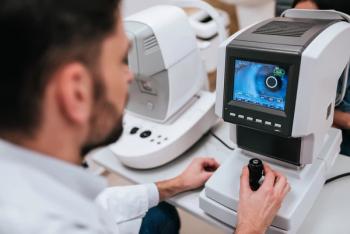
Optometrists can establish role in promoting smoking cessation
A link between smoking and eye diseases establishes a role for optometrists in promoting smoking cessation.
Dr. Spafford, professor, University of Waterloo School of Optometry, Ontario, Canada, presented the findings from a collaborative study led by psychology doctoral student, Ryan Kennedy, MAES, and involving optometry (Dr. Spafford and Matt Iley, BSc, OD) and nursing (Annette Schultz, RN, PhD). Transcripts prepared from five 90-minute, audio-recorded focus sessions involving 18 senior optometry students from the school and 11 optometrists practicing in the surrounding Waterloo region were reviewed by research team members and coded for themes on attitudes and behaviors.
Smoking questions limited
Group discussions revealed, however, that the students and practitioners appreciated the importance of discussing smoking habits with patients and indicated several potentially modifiable barriers to this role.
"Numerous international studies have shown that while smokers have a high level of knowledge about smoking as a risk factor for heart disease, lung disease, and stroke, fewer than 10% recognize its association with eye disease. The relevance of this information is that various studies also show smokers are afraid of blindness, and so intervention by eye-care providers may be an opportunity to work toward smoking cessation," Dr. Spafford said.
"Our findings identify needs to: increase understanding among optometrists that speaking with patients about smoking cessation is within their role; improve training for communicating with patients on addiction, smoking behavior, and cessation strategies; and increase interprofessional collaboration opportunities and public education."
The barriers to optometrists facilitating smoking cessation reflected four major themes related to the optometrists' perceived role: insufficient training, perceived patient attitudes, and health care system limitations.
Participants considered family physicians the key health care providers who should be working with patients about smoking cessation, but they felt uncomfortable taking on this task themselves. They felt they lacked sufficient training in addiction, smoking behavior, cessation strategies, and communication strategies for discussing these issues.
Furthermore, the students and optometrists assumed patients would be surprised to be approached by optometrists about this topic and were worried patients would reject their efforts and perhaps lead them to discontinue their optometry care.
Finally, a lack of financial reimbursement for optometrists to counsel patients or make smoking cessation referrals and a lack of time during the office visit were identified as health care system constraints.
Need for multidisciplinary care
The focus group participants showed clear interest in interprofessional collaboration. This stance suggests opportunities for optometrists and family physicians to work together regarding smoking cessation referrals for patients and a need for governments to provide public education on the links between smoking and blindness, Dr. Spafford said.
"In Australia, where a public education campaign on smoking and blindness was launched 3 years ago, about 50% of the public recognizes the vision risks of smoking," she noted.
The results of this pilot study are being used to develop a national survey of Canadian optometrists regarding practice patterns and opportunities for smoking cessation referrals in optometric practice.
Newsletter
Want more insights like this? Subscribe to Optometry Times and get clinical pearls and practice tips delivered straight to your inbox.





